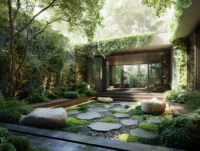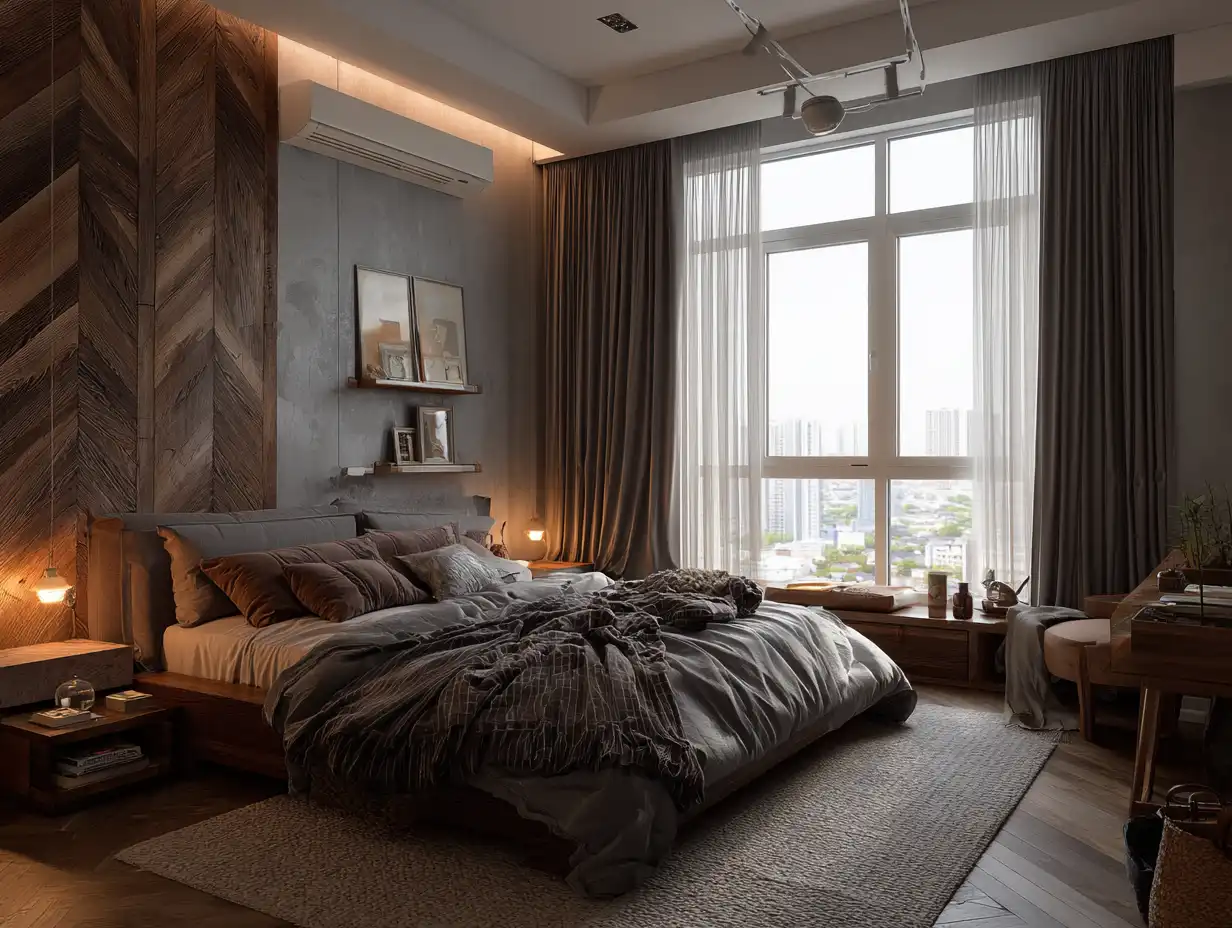A fireplace isn’t just a source of warmth; it’s the heart of any room, blending function with undeniable charm. Whether we’re curling up on a chilly evening or hosting friends, a well-designed fireplace can anchor the space and elevate its style. From sleek modern designs to rustic classics, fireplaces offer endless opportunities to transform a room into something truly special.
As we explore the art of interior design with fireplaces, it’s all about striking the perfect balance between aesthetics and practicality. We’ll dive into tips for selecting the right materials, layouts, and accessories to create a cohesive look. Whether we’re updating an existing space or starting from scratch, the possibilities are as boundless as our creativity. Let’s turn our fireplaces into stunning focal points that reflect our style and make our homes feel more inviting than ever.

Why Fireplaces Are A Central Element In Interior Design
Fireplaces serve as both functional and aesthetic anchors in interior spaces. They provide warmth while creating a visual focal point that naturally draws attention. This dual-purpose design makes them a central feature in many homes.
Historical significance enhances the timeless appeal of fireplaces. Originating as core elements of early home structures, fireplaces retain their charm, symbolizing comfort and homeliness across generations. This cultural importance adds depth to their role in design.
Modern fireplaces cater to diverse styles and layouts. Whether sleek electric models for contemporary spaces or rustic wood-burning designs for traditional homes, they complement various interior themes seamlessly. Their adaptability ensures relevance in both old and new designs.
Strategic placement optimizes room usability. Installing a fireplace in a central location encourages social gatherings around it. This arrangement fosters a convivial atmosphere while enriching the room’s design symmetry and balance.
Choosing The Right Fireplace For Your Space
Selecting a fireplace involves matching its design and functionality with your room’s layout and style. Factors like aesthetics, heating requirements, and space constraints guide the decision process.
Traditional Vs. Modern Designs
Traditional fireplaces feature timeless elements like brick surrounds, wooden mantels, and open hearths. These fit well in classic or rustic interiors. For example, a stone-clad fireplace complements country-style homes.
Modern designs focus on minimalist aesthetics, including sleek frames, clean lines, and innovative features like electric or bioethanol fuels. They suit contemporary styles, offering options like glass enclosures or recessed installations.
Evaluating Your Space And Needs
Room size impacts the fireplace’s scale and heat output. Large living spaces benefit from substantial fireplaces with higher BTU ratings, while smaller rooms work better with compact or wall-mounted designs.
Purpose determines functionality. A decor-focused fireplace may prioritize design, while a heating solution requires efficiency. Open floor plans may use double-sided fireplaces to serve two areas simultaneously.
Materials And Finishes To Consider
Stone, brick, marble, and tile enhance durability and set the fireplace’s tone. A marble fireplace, for instance, adds elegance, while exposed brick offers a rustic feel.
Metallic finishes, such as stainless steel or brass, complement modern aesthetics. Painted wood mantels or textured tiles provide versatile options for blending traditional and modern elements.

Stylish Decorating Ideas Around Fireplaces
Fireplaces can transform a room into a stylish and inviting space. Focusing on decor elements around the fireplace enhances its appeal and creates a cohesive design.
Furniture Placement For A Cozy Look
Arranging furniture strategically maximizes comfort and highlights the fireplace. Create a central seating area by positioning sofas and chairs to face the fireplace directly, encouraging conversation. Use area rugs to define the space and add warmth. For larger rooms, consider adding accent chairs or ottomans to balance the layout. Avoid blocking the fireplace view by keeping furniture height low or selecting transparent options like glass tables.
Incorporating Artwork And Mantel Decor
Artwork and decor on the mantel personalize the space and draw attention to the fireplace. Select a large, visually striking piece like a framed painting or a decorative mirror as a focal point. Layer smaller objects like vases, candles, or books to add depth. Maintain balance by arranging decor items symmetrically or asymmetrically, depending on the room’s overall design style. Add greenery, such as potted plants, to introduce texture and color.
Lighting Tips To Highlight Your Fireplace
Effective lighting enhances the fireplace’s visual impact. Use sconces on either side of the fireplace to create symmetry while illuminating its features. Accent lighting, such as spotlights or LED strips, helps highlight mantel decor or stonework. Pair warm-toned lights with dimmer switches to adjust the ambiance for different occasions. Complement these fixtures with table or floor lamps in the room to maintain overall brightness.
Seasonal Styling With Fireplaces
Fireplaces play a pivotal role in seasonally updating interior design. By adjusting decor and surrounding accents, we can enhance their aesthetic appeal throughout the year.
Warm Winter Accents
Winter calls for cozy enhancements. Adding plush textiles like wool or faux fur throws on nearby furniture elevates comfort. Incorporate deep hues such as burgundy, navy, and forest green in cushions or rugs to create a warm, inviting atmosphere. Candles on the mantel, whether in metallic holders or glass jars, amplify the snug ambiance. For a festive touch, garlands, pinecones, or seasonal wreaths can complement the fireplace during the holiday season.
Fresh Looks For Warmer Seasons
Lighter, breezier decor keeps fireplaces relevant in warmer months. Switch to linen or cotton fabrics in soft, neutral shades like beige or pastel blue for surrounding furniture and accents. Placing a mirror or seasonal artwork above the mantel can brighten the room and maintain a fresh summer aesthetic. Adding decorative elements like plants, coastal decor, or a bowl of fresh flowers keeps the space vibrant. For unused fireplaces, arranging candles or stacked logs inside forms a stylish yet functional focal point.

Conclusion
Fireplaces remain essential in combining functionality with style, serving as both practical heating elements and standout design features. By carefully considering materials, layouts, and decor, we can seamlessly integrate them into any interior design. Whether enhancing a traditional room’s charm with stone surrounds or introducing modern sophistication through minimalist designs, fireplaces adapt to diverse aesthetics.
Their role extends beyond visual appeal, offering spatial definition in open-concept designs or saving space with compact, wall-mounted models. Thoughtful decor, such as seasonal adjustments and personalized mantel pieces, turns fireplaces into dynamic focal points. Small touches like layered lighting or reflective surfaces further elevate their impact.
With fireplaces, we have the opportunity to reinvent spaces while preserving comfort, making them a timeless element in stylish interior design.
- chic interior design tips
- classic fireplace designs
- cozy home interior design
- cozy living room design
- elegant home fireplaces
- elegant living room fireplaces
- enhancing home coziness
- fireplace decorating ideas
- fireplace design ideas
- fireplace installation guide
- home decor with fireplaces
- home fireplace inspiration
- interior design guide
- interior design trends
- interior design with fireplaces
- luxury interior design
- minimalist fireplace ideas
- modern fireplace designs
- stylish home decor
- Stylish interior design















Leave a comment